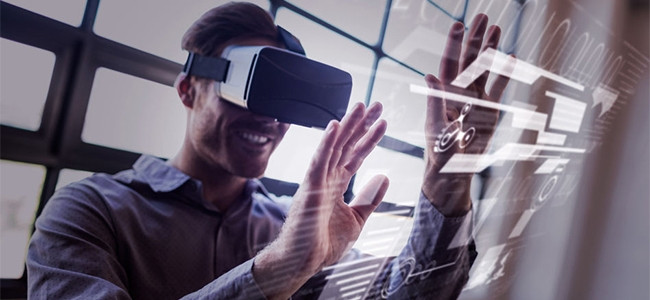
Microsoft is combining technology from two of the biggest crazes in the last year to create a new platform, Microsoft Mixed Reality, which was unpacked at the launch of its Windows 10 Fall Creators update.
Microsoft unveiled the update at Europe's largest consumer tech fair, IFA 2017, taking place in Berlin this week.
The term 'mixed reality' refers to the merging of the physical, virtual and augmented realities. Virtual reality (VR) went mainstream early last year when consumer headsets by Oculus and Samsung were released, and augmented reality (AR) gained popularity when the game Pokémon Go captivated millions of people around the world last July.
In mixed reality, physical and digital objects are able co-exist and interact in real-time. This is achieved through a series of sensors and motion controllers. A person wearing a mixed reality headset will be able to see the walls of the room they are in and the objects within it.
"By combining physical and digital worlds, Microsoft believes mixed reality is the next step in the evolution of human computing," says the company.
"In Windows Mixed Reality, users are fully immersed in the experience and are not limited to a mobile device screen size. The setup is simple, and does not require users to mount cameras around the room - just put the headset on, plug it into a PC and get started.,"
During IFA, Microsoft announced a number of partnerships with hardware companies that will integrate the Fall Creators mixed reality features into headsets and motion controllers.
Each company used the Microsoft Mixed Reality platform but was allowed to tweak the headsets and controllers slightly. These companies include Acer, Asus, Dell, HP and Lenovo. The products are expected to be released early next year and will start at $299 (R3 900).
However, a headset is not required to use the platform.
"Even for customers without headsets, Microsoft will deliver mixed reality experiences through the PC. With Mixed Reality Viewer, users can see 3D objects - either from the Remix3D.com community or their own creations from Paint 3D - mixed into their actual surroundings through the PC's camera - and snapped and shared - for powerful ways to tell their story," says Microsoft.
Other updates to the operating system include: Windows Inking, which allows users to make comments on PDF files; OneDrive Files On-Demand, which allows users to access cloud files without using local storage; and an updated Windows Defender, which uses behind the scenes cloud intelligence to enable new defences against ransomware and exploits.
The Fall Creators Update also makes Windows more accessible for those with Lou Gehrig's disease (or amyotrophic lateral sclerosis), which is a progressive neurodegenerative disease that impacts the brain's ability to control the body's muscles. Cosmetologist Stephen Hawking suffers from it.
"A new feature called Eye Control implements eye-tracking technology that lets users type and operate a mouse using their eyes. This is life-changing technology for those with this disease, and a real advancement in accessibility," says Microsoft.
The update will start rolling out on 17 October.
Share